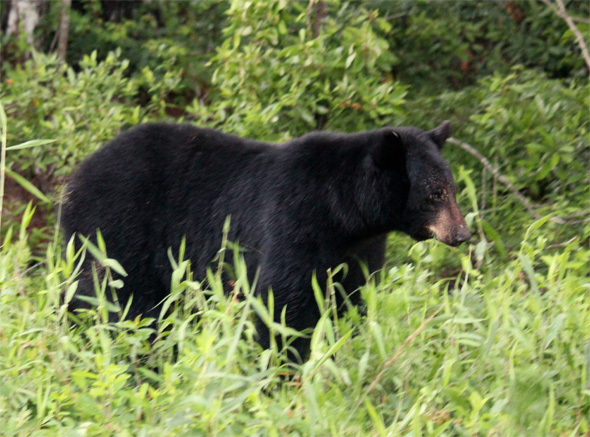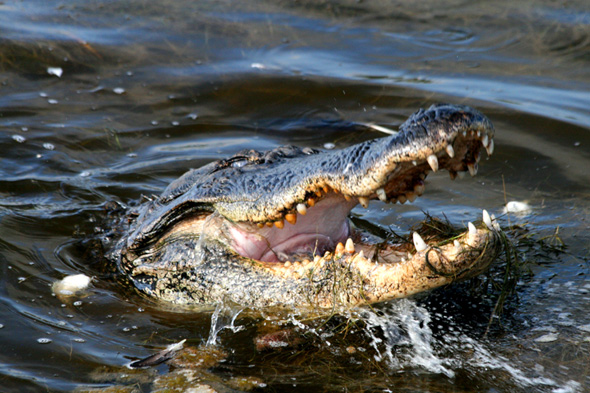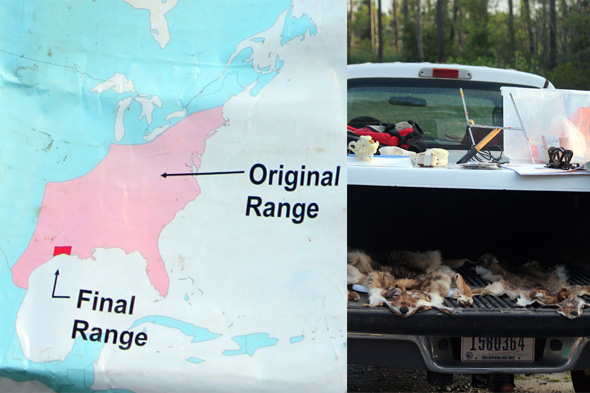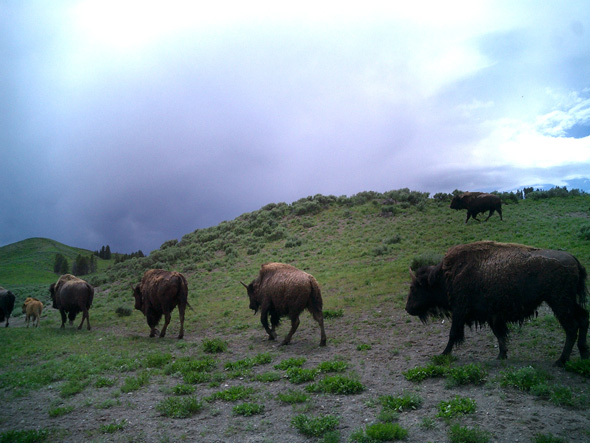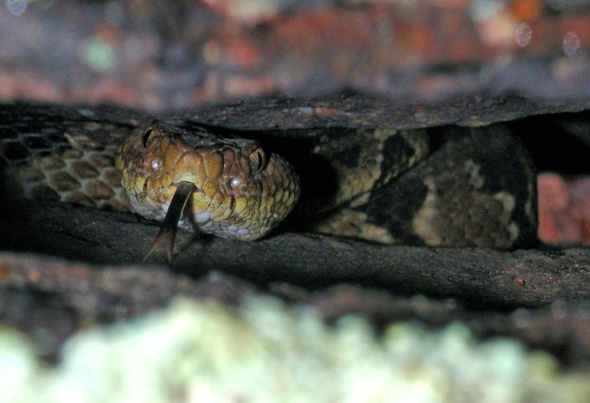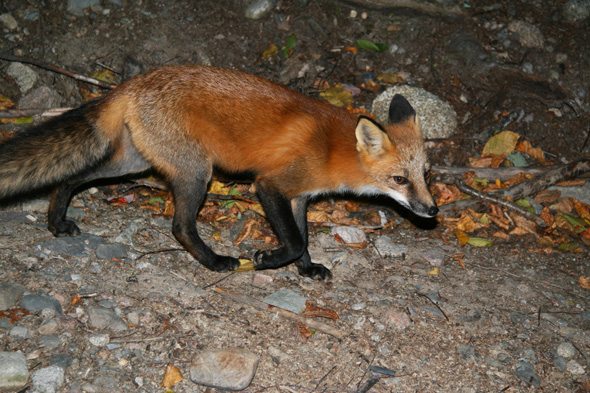As I sit and write, only a short distance from my suburban home a lone black bear is on the run like a fugitive accused of a crime it had not committed. Reports have been flooding in as it meanders across our farmlands, deciduous forests, river valleys, and backyards not too far from the bustling urban landscape of Baltimore City. In this foreign land, miles away from the safety of Appalachians where they are still commonly found, this creature is clearly out of place and for many people, a very unwelcomed guest. Some folks have even taken arms and chased after the beast to rid us of what they perceive as a foul menace. What amazes me is that if you speak with those who live in other parts of the country where bears are numerous and accepted by their culture, you will find that those people pay them little mind. They see bears as part of the natural world and for the most part, both the bears and humans leave each other alone.
The idea of allowing sustainable populations of large animals such as black bear to live in the heavily populated areas around Baltimore is not one I necessarily agree with. Due to the fact that we have so much habitat fragmentation from our roads and development, unwanted human-bear encounters would perhaps be much more likely than in other more rural areas around the country. The bears obviously agree and each time they visit, tend to continue onto more secluded habitat back west or north to Pennsylvania. With this most recent occurrence, I had several people comment to me that they believed that if encountered, the bear would surely seek them out as a tasty snack. Black bear attacks are incredibly rare, with an estimated hundreds of thousands of black bears inhabiting North America, approximately 100 deaths that have been recorded in the last 100 years. Most of those were probably were related to a mother protecting her young. I must note that bears are actually omnivores, mostly eating a variety of plants, berries, and less so, some prey items ranging from small rodents, fish, and on rarer occasion creatures as large as young deer.
Ironically, a few weeks before this bear made the headlines, I went on an adventure in coastal North Carolina actively seeking out these very animals, hoping to catch a glimpse of one of nature’s most interesting creatures. After hours of searching from both vehicle and kayak across miles of swampland my friend Mike and I discovered a total of eleven black bears. None of them displayed any aggressive behavior and we even observed a mother bear with three cubs that let us sit several yards away in our vehicle while we photographed and filmed her for a solid fifteen minutes. At a time like that I couldn’t help but reflect on the amount of fear that so many of us have of predators and how unfounded it is.
Most of our trip consisted of trying to obtain photo and video of wildlife not found locally to our area of the country and oddly enough most of them happened to be predators. We spent the majority of our time in the Alligator River National Wildlife Refuge. This 154,000 acre tract of land is home to approximately two black bears per square mile, the northern-most population of American alligators, four species of venomous snakes, endangered red-cockaded woodpeckers, bobcats, river otters, and perhaps most importantly, the successful population of approximately 100 reintroduced red wolves bred from only a few pairs that were the last of their kind after being declared extinct in the wild in 1980.
While we weren’t fortunate enough to see all of these species on this one trip, we did have the opportunity to experience an amazing continuous stretch of protected habitat and learn more about them. We participated in a “Red Wolf Howling” that was presented by the US Fish and Wildlife Service as a way to let the public learn about the wolves at the refuge and even hear the howls of their captive animals. The red wolf is a species that has always sparked my interest. These wolves used to roam throughout much of the eastern United States including Maryland before being hunted to near extinction. They are larger than coyotes but smaller than the gray wolf. DNA evidence shows that they appear to be a natural hybrid between the gray wolf and coyote from long before European settlers came to America. They are doing quite well in eastern North Carolina due to the vastness of the undeveloped land available for them to inhabit. This is one of the few successful predator reintroductions and may serve as a precedent for future attempts with other species.
I often like to think about all of the species that are recorded to have lived in the place I call home, just east of Baltimore in Harford County, during a much simpler time. Not all that long ago we would have not only had black bears wandering free but records show many others you may not even realize. We had wolves hunting what at that time could have been not only white-tailed deer but even young elk and bison that once roamed throughout our forests and meadows. The Eastern cougar would have stalked prey from the rock outcroppings along our rivers, keeping the now out of control game animal populations in check. We have evidence that timber rattlesnakes were once here as well, before all of the rounds-ups that narrowed this important form of rodent control to a western mountain species in Maryland.
Some species are still here but perhaps barely in comparison to historic numbers. The closest thing to the absent larger predators would be our three canine species and only feline, the bobcat. The bobcat, although still considered stable and known to be elusive, are said to be in much lower numbers than they once were. Grey foxes typically avoid humans and are clearly not as adaptable to urban areas as their cousin the red fox. Because of their tolerance of human influence on the landscape, the opportunistic red fox and raccoons continue to flourish in the void of predators and fill niches that others have left open for the taking. Although not a historical species, coyotes are now here as well, once a species of the Great Plains, they have expanded east to take advantage of the absence of competition.
We are still fortunate to have many species that are hanging on despite the mistakes of the past. While looking back can seem depressing, I see it as an important lesson on how fragile the ecosystem truly is and how if we are not careful we may create an unnecessary negative impact on wildlife. It is promising that some reintroductions could possibly work in certain areas and perhaps with the right amount of research we could restore balance to nature that we have interrupted for so long. We have the power to protect our native wildlife and give them help they need so we can live in harmony and continue to enjoy each species we still have so they don’t become another lost creature of the past.

